|
CAPE
COD BRUSH BREAKERS
1940's
The Second Generation 1950's
* A PICTORIAL HISTORY *
By Britton
Crosby
January 2001
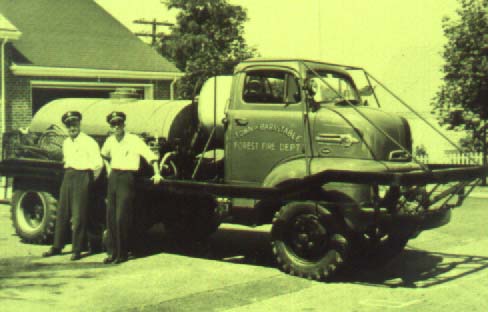
The
Second Generation Brush Breaker
In 1952 the Town of Barnstable Forest Fire Department took the
barwork and the water tank from the 1937
brush breaker and built a new brush breaker on this 1952 Ford
Marmon Herrington chassis.
New fire chief and forest warden Charles Hallett (r) stands
proudly with Deputy Herbert Coombs and the new breaker..
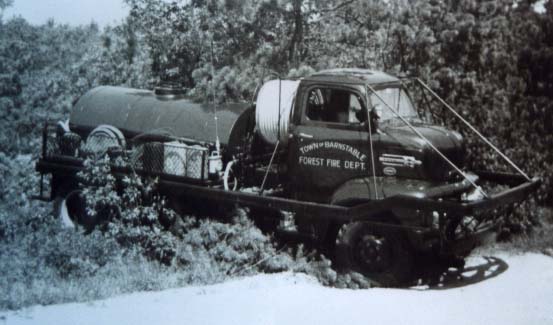
Town of Barnstable 1952 Ford Marmon Herrington Brush Breaker undergoes off road tests.
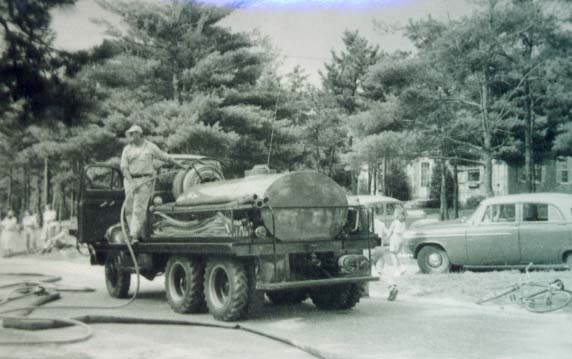
The brush
breaker carried the 800 gallons of water so it also came in handy
at structure fires as well.
The brush breaker would typically be at the fire while the pumper
could be down the street at a hydrant
or drafting from a cistern, pond, or bog.
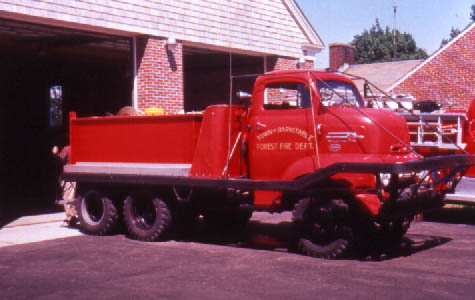
The 1952 brush
breaker had a new water tank and new body work installed in the
late 1950's.
The reel was removed in favor of a sheltered area behind the cab
for firemen to ride and operate from.
A separate pump motor in the back of the apparatus allows the
brush breaker to pump and roll
thereby putting out fire on the move, getting around grass and
brush fires without firemen
having to get off the apparatus.
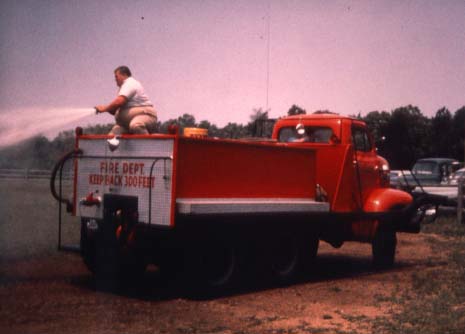
The brush breaker served assorted duties including wetting down the fairgrounds.
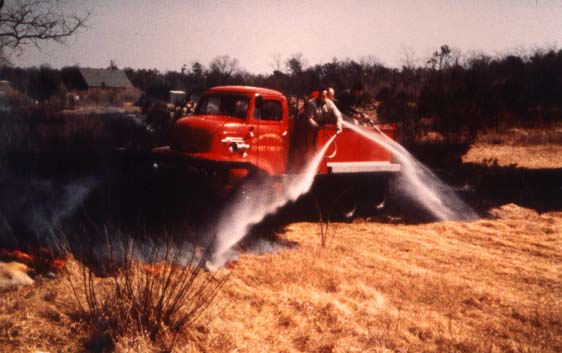
With pump and roll capabilities brush breakers
can drive around the fire quickly extinguishing grass fires.
In other cases, coils of forestry hose stored in the top of the
truck can be dragged by firemen to extinguish fires
within reach of hoselines.
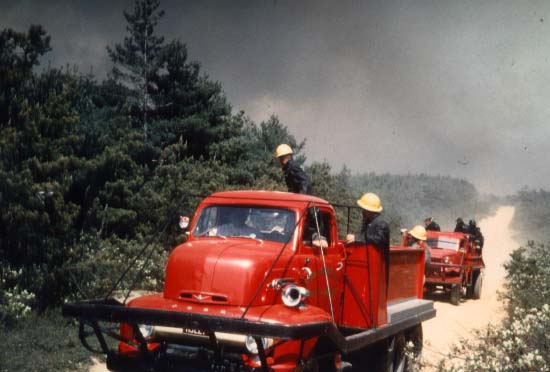
Cape Cod brush
breakers were sometimes called to assist at Plymouth County fires
such as this Carver fire.
A crew of six was not unusual on the brush breaker.
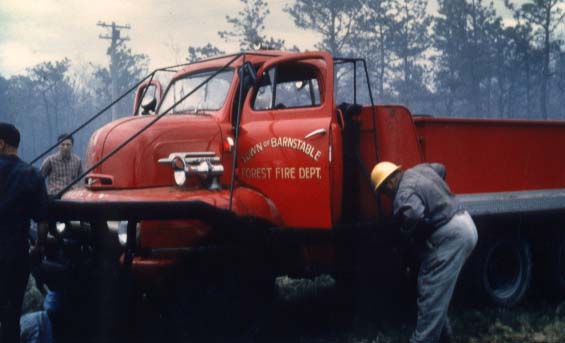
As brush
breakers come out of the woods, it is important to clean
flammable debris off the truck.
It is also important to check brake lines, steering mechanisms,
tires and other mechanical
parts of the truck which can take a serious beating operating off
road. As long as everything is
working properly, the water tank is refilled and firemen are
provided water before going back into
the woods for more work.,
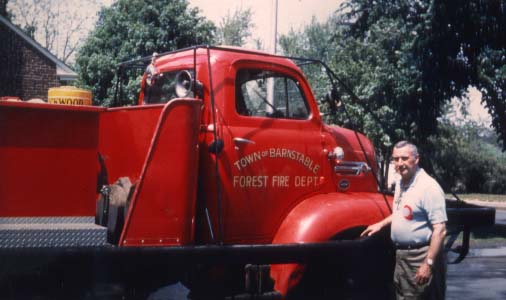
Firemen take a lot of pride in their apparatus. Having a good brush breaker is no different.
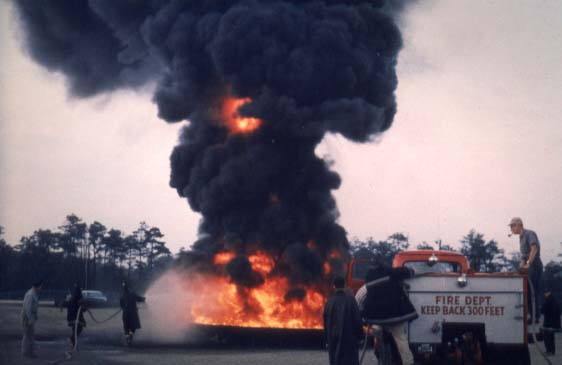
The brush breaker is used to supply lines at the fire school oil pit fires.
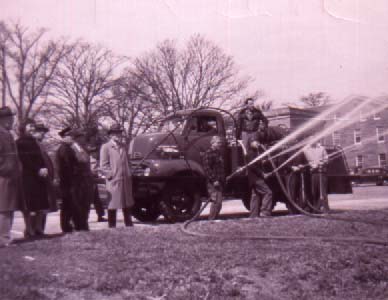
The second generation of County Brush Breakers
were also built in the early 1950's.
This breaker demonstrates its pumping capabilities for County
officials at the County Complex.
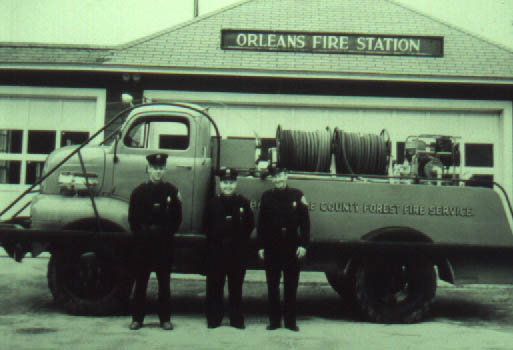
The Orleans Fire Department housed one of the early 1950's County Breakers.
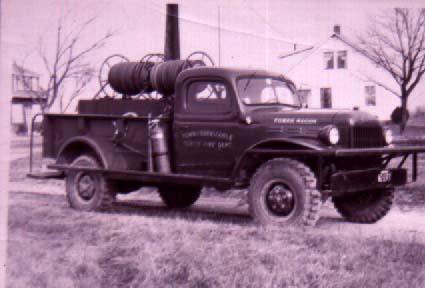
This 1947 Dodge
Power Wagon brush breaker was built for the Town of Barnstable
Forest Fire Department and was stationed in the Cotuit Fire
Department.
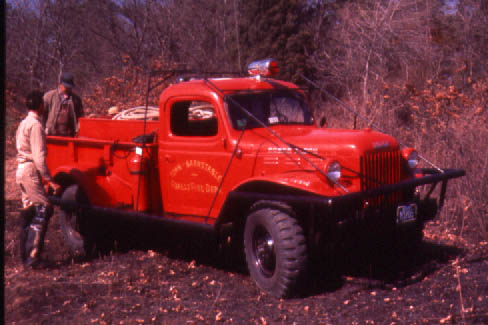
Cotuit's 1947 Dodge Power Wagon.
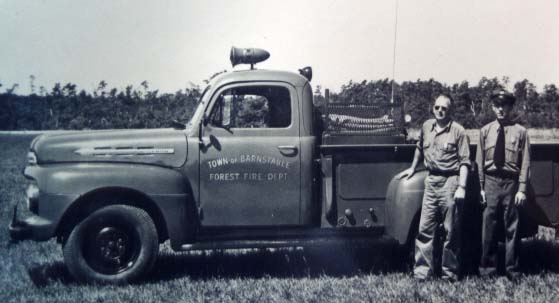
Town of Barnstable Forest Fire patrolmen stand
with their 1950 patrol truck.
Patrol trucks were typically the only manned apparatus in town
and were often first to arrive at
incidents of any type. When not fighting fires, they maintained
fire roads and equipment.
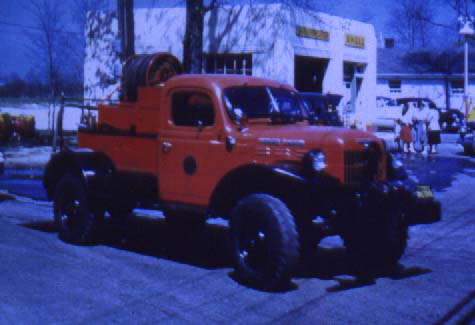
Falmouth Fire
Department used several Dodge Power Wagon brush trucks.
Many of these power wagons were former military vehicles.
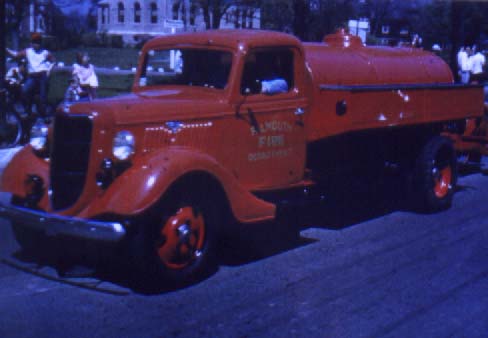
Falmouth Fire Department 1940's Ford tanker.
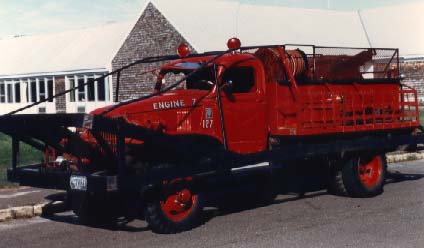
Bourne Fire Department operated this 1944 Dodge brush breaker until the 1970's.

This 1957 Dodge Power Wagon forestry unit served Yarmouth until 1994..
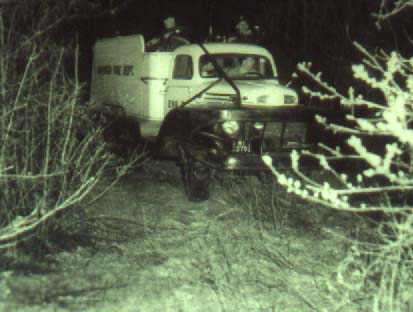
Harwich Fire Department operated this large brush breaker built on a 1950's Ford.

The Harwich Brush Breaker, dubbed the White Elephant, retired in the 1970's.
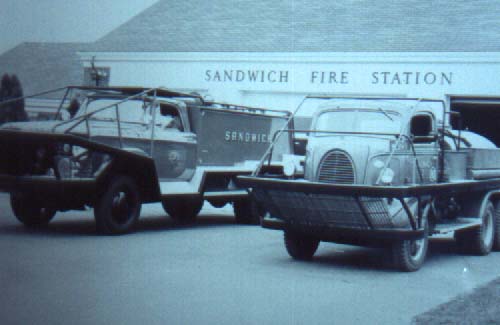
The new and old
Sandwich replaced its 1940's Ford brush breaker with a late
1950's Dodge.
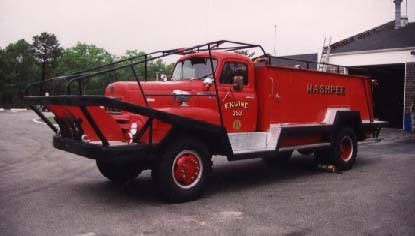
In 1957 the
Mashpee Fire Department built this Brush Breaker on an
International chassis.
It had a 750 gallon water tank, 750 gpm front mount centrifugal
pump and a separate
motor and fire pump on the rear step. Built by Maynard, it served
as a structural apparatus as well
as a brush breaker. This truck just recently (2000) went out of
service.
More Pages of Brush Breakers
1920's The First Generation 1930's
1960's The Third Generation 1970's
1980's The Latest Generation 1990's
NOTE
Photos in this series are from various sources
including fire department and personal collections.
